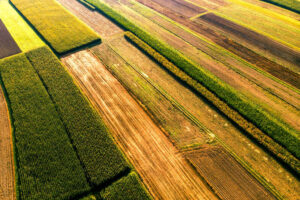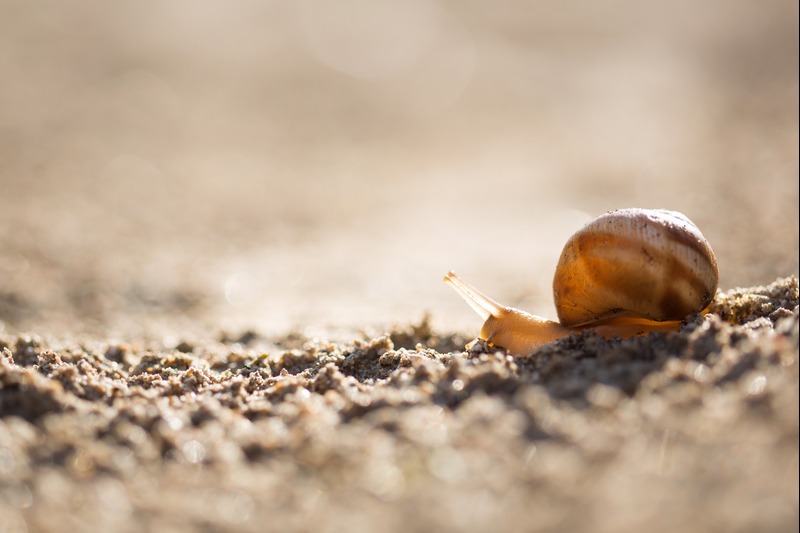
Mollusca’s Hidden Survival Mechanisms: Thriving Without Water

Snail crawls on sand in sunlight. Natural beige nature background. Image by _Natalya, Envato
Mollusca is the second most distinctive animal phylum with over 100,000 species—a stunning biological fact. Molluscs are commonly found around the globe in lakes, rivers, mountain ranges, and the deep sea. The phylum comprises familiar living organisms such as clams, mussels, snails, squids, and octopuses.
Although all molluscs aren’t identical-looking, there are three common features that distinguish them from other phyla: a foot as a muscular organ, a mass of soft flesh called the mantle, and a rasp-like scraping organ called the radula.
A Tale of Survival: Mollusca
Way out exists even from the most desperate situations. Water mollusca prove that statement. At first sight, they are absolutely unable to live without water, as they consist almost totally from water. However, this is only at first sight. Russian scientists have analyzed their data and the data from their colleagues who observed mollusca on the banks of various water bodies and have discovered the adaptation mechanisms these animals employ to live without water.
Water mollusca are used to being constantly thrown out by sea-waves on the shore, or the imminent high tide “forgets” to take mollusca along with it, or the native lake can dry up. Mollusca got accustomed to that and elaborated a lot of accommodation mechanisms that allow to survive on land for a long time – for up to a year. However, the term depends on atmospheric temperature: the higher the temperature is, the less chances the animal has to survive. Mollusca’s adaptation mechanisms were investigated by researchers of the Severtsov Institute of Ecology and Evolution Problems, Russian Academy of Sciences.
The water mollusc that remained on land has to solve two major problems: to retain moisture and to breathe in unusual conditions. While the mollusc is only starting to dry off, it is actively crawling and collecting food in reserve if it is available (it should be noted that even the mollusca that normally can only swim are crawling in these conditions). But moisture should be preserved for respiratory surface, otherwise the mollusc will be unable to breathe, therefore, some time later it passes to the second phase of its self-rescue. Special viscous liquid is excreted, the origin of the liquid is still unknown to researchers. The liquid serves as lubricant and does not allow the animal to dry up. To intensify the effect of water-retaining lubricant, some mollusca bunch into packs of 3 to 6 individuals and hide under stones, in the rock cracks – i.e., in the shadow.
The case is easier for the mollusca that have big shells and special folds or covers to close up the shell with. Then they turn out to be in a waterproof “house” and lose less moisture. However, it will soon be nothing to breathe in the “house”, and then chemical changes take place in the mollusc’s organism, these changes allowing to live without oxygen or interaction with the environment. The hemolymph (i.e. mollusc’s blood) protects the mollusc from being poisoned by products of such airless metabolism, calcium from the internal surface of the shell assisting the hemolymph. Approximately the same role is played by the so-called crystalline pedicel – the organ that can be apparently considered a strategic stock of food and oxygen.
The unlucky mollusca that are deprived of shells or whose shells are small have to bury oneselves into the soil – it is cooler there. Mollusca bury themselves so skilfully, as if they had spent all their life in the soil – sometimes deeper than 35 centimeters. If a small shell is still in place, then, having buried itself, the mollusc draws the body in the shell and excretes a protective film to close up the “entry”. It is interesting to note that mollusca are apparently great individualists: even representatives of the same species living in the same water body bury themselves at different depth, excrete different protective films, and some do not bury themselves at all. Nevertheless, whatever the mollusc does, whatever the shell it has to protect itself, it would lose moisture all the same: within a long drought the mollusc can “grow thin “ by 40 to 80 percent.
The respiration problem is also solved by water mollusca in different ways. When in water, some breathe with gills, some – with lung, and when on land they have to “absorb” oxygen by the entire body – that is possible due to the blood vessel network located close to the surface. Besides, combined respiration is common among mollusca, i.e. they can breath both by the atmospheric air and by the oxygen dissolved in water. This skill is inherent to, for example, freshwater mollusca that inhabit constantly drying up water bodies.
Are Slugs and Jellyfish Molluscs?
Slugs are molluscs of the class Gastropoda. Scientists and experts from the University of Oxford discovered a new species of molluscs through their fossil remains. They observed that the Shishania aculeata lived around 500 million years ago, embodying a protective armor and shell-less anatomy. Due to its appearance, it was initially called “the plastic bag”.
Jellyfish belong to the class of Cnidarians. Serving a dual purpose, this invertebrate has stinging cells, which are used to trap its prey as well as act as a defense mechanism. With a body composition of 95% water, jellyfish are pelagic animals that live in a wide range of open seas. Its radial symmetrical body comprises three main parts: the umbrella, the oral arms, and the stinging tentacles.
Marine Mollusks’ Adaptations Under Environmental Stress
Marine mollusks are beneficial bioindicators that notify us of impending environmental and climatic changes. Prolonged and intense heat waves can alter the microbial communities associated with bivalves and their microbial communities by impacting their immunological and other physiological reactions to varying degrees.
Along with climate change, marine mollusks also suffer from environmental pollution, such as noise and light pollution. Furthermore, in the study Transcriptomic response to salinity variation in native and introduced mud-tidal gastropod Batillaria attramentaria, mollusca were studied to be affected by changes in salinity too.
Understanding the Mollusca’s Remarkable Adaptation Strategies
Mollusca exemplifies the power of resilience and adaptation, highlighting how life can thrive even in the harshest environments. Through commendable mechanisms, such as moisture retention, adaptive respiration, and self-protection techniques, these living species have learned to survive without water for extended periods. Despite environmental challenges like climate change and pollution, molluscs continue to endure both land and water conditions. One can learn extraordinary survival strategies through these fascinating creatures, making them a true testament to the theory of survival of the fittest.












